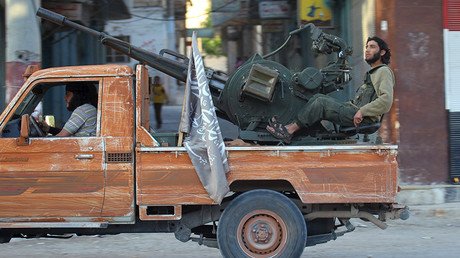No Russian, Syrian flights around Aleppo for 8 days – Moscow

Russian and Syrian military jets have not conducted any air raids 10km around Aleppo for eight days, the Russian Ministry of Defense said Wednesday, adding that Moscow and Damascus are ready to resume ‘humanitarian pauses’ in the besieged city.
“Russian Aerospace Forces and the Syrian Air Force are observing a moratorium on flights which are closer than 10km to the city for the eighth day,” Defense Ministry spokesman Major-General Igor Konashenkov said.
Civilians who are leaving the city may use six humanitarian corridors which are open 24/7, according to Konashenkov.
Russia’s reconciliation center has delivered about 10 tons of humanitarian aid to Aleppo civilians, the spokesman added.
Russian and Syrian authorities are “ready to resume humanitarian pauses in Aleppo if it gets guarantees from international organizations that they are ready to let patients, wounded and civilians leave the areas held by militants,” Konashenkov said.
Despite constant violations by the so-called “moderates” undermining Syrian truces, civilian suffering in Aleppo is being blamed exclusively on Damascus and Moscow. Amid another halt in airstrikes, RT looks back at the two failed US-Russia ceasefire deals.
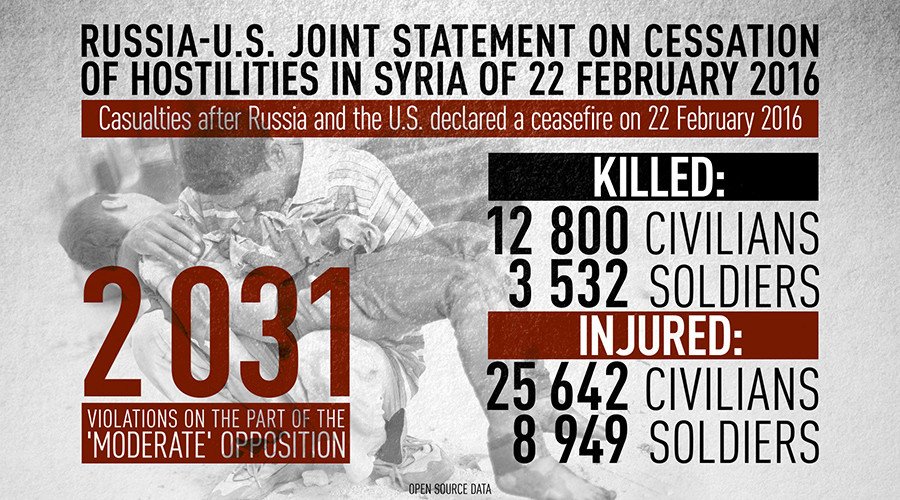
In February, after the first US-Russian ceasefire agreement on Syria was reached, the United States was able to ensure compliance with the agreement provisions only by a handful of “moderates” – while almost two dozen militant groups continued to wage war against government forces, in defiance of the deal.
As a result, opposition groups had violated the ceasefire more than 2,000 times by September, killing at least 12,800 civilians and injuring over 25,000 others across Syria.
In September, after the second ceasefire deal was negotiated, the US also failed to ensure compliance of the truce by so-called “moderates.” That truce envisaged both a cessation of hostilities and the creation of humanitarian corridors for civilians and aid groups.
Not only did opposition groups in Aleppo province fail to withdraw from Castello Road, which was set to become a humanitarian corridor for aid convoys, but they also attacked Syrian forces – despite those forces trying to fulfill their part of the agreeement.
The militants also mined humanitarian corridors leading out of eastern Aleppo, to prevent civilians from leaving the area. Meanwhile, their leaders refused to let through and ensure the security of UN humanitarian aid convoys.
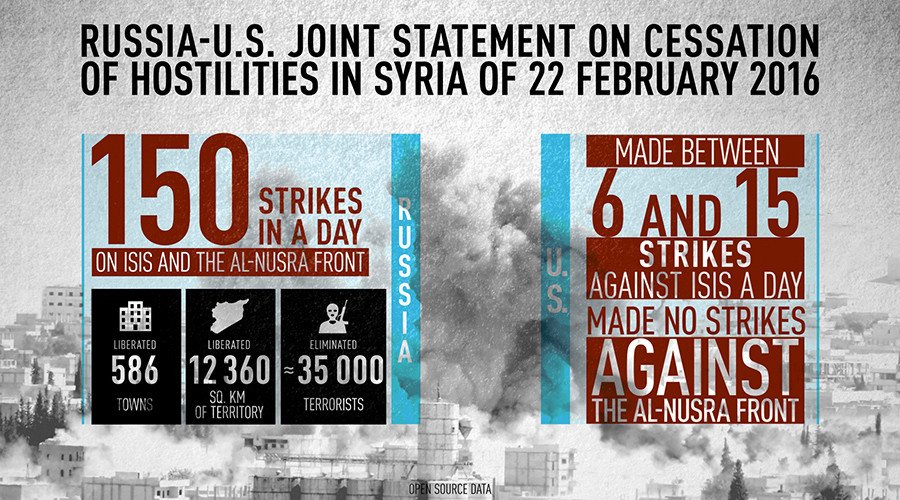
Washington's ability to effectively separate the opposition it supports from terrorist organizations such as Al-Nusra Front or Islamic State (IS, former ISIS/ISIL) has been questioned by Moscow from the very beginning. On February 26, a day before the first US-Russian agreement came into force, the US handed a list of “moderates” to Russia, which contained two groups that pledged allegiance to IS and eight more that acted under the auspices of Al-Nusra.
Later, the US repeatedly failed to fulfill its obligation to separate moderates from terrorists, despite numerous requests from Russia. In early October, the US State Department acknowledged that the moderates had become “too intermingled” with Al-Nusra, and even accused Russia of “driving” the opposition right into the arms of the Al-Qaeda affiliate.
As a result, the fight against Al-Nusra was seriously hindered while violations of the ceasefire agreement continued. Between September 12-19, moderate opposition groups violated the truce 302 times, claiming lives of 823 civilians and injuring 252 others.
The US also failed to contribute to the political process in Syria, as it was unable to persuade opposition forces to give up their demand that Assad be removed from power as a prerequisite for the process to begin. Talks on political reconciliation have been reduced to nothing.
On top of that, the US never shared its intelligence data concerning territories held by various groups with Russia. According to the Russian Ministry of Defense, its US counterparts either did not provide any such information at all, or handed over data that did not allow for pinpointing the exact locations of various groups, simply giving a “general picture.”
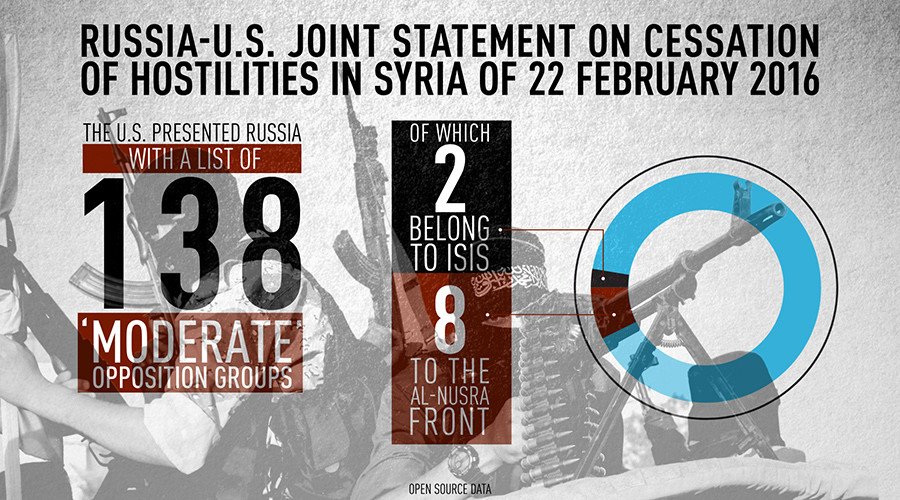
In September, Chairman of the Joint Chiefs of Staff General Joseph Dunford testified before the Senate Armed Services Committee, saying the Pentagon does not “have any intention of having an intelligence sharing agreement with the Russians.”
Efforts aimed at establishing direct cooperation between the American and Russian militaries were also undermined by Washington several times. In February, ‘hotlines’ were created to ensure the quick exchange of information between the Russian ceasefire coordinating center in Khmeimim, Syria, and the US center in Amman, Jordan.
However, on June 28, the link between Khmeimim and Amman was broken by a unilateral US decision. A joint analytical political and military group, which was established earlier, was also disbanded.
Plans to establish a joint US-Russian HQ to share intelligence and conduct “synchronized” strikes on Islamists in Syria were also eventually ruined, as US specialists eventually refused to work with their Russian colleagues on instruction from Washington, according to the Russian Defense Ministry.
Another issue that raises questions about Washington's motives in the Syrian conflict is the fact that US forces did not target Al-Nusra militants in 2016. The US justified its actions by saying it would like to avoid unnecessary civilian casualties, as Al-Nusra “became intermingled in civilian areas.”
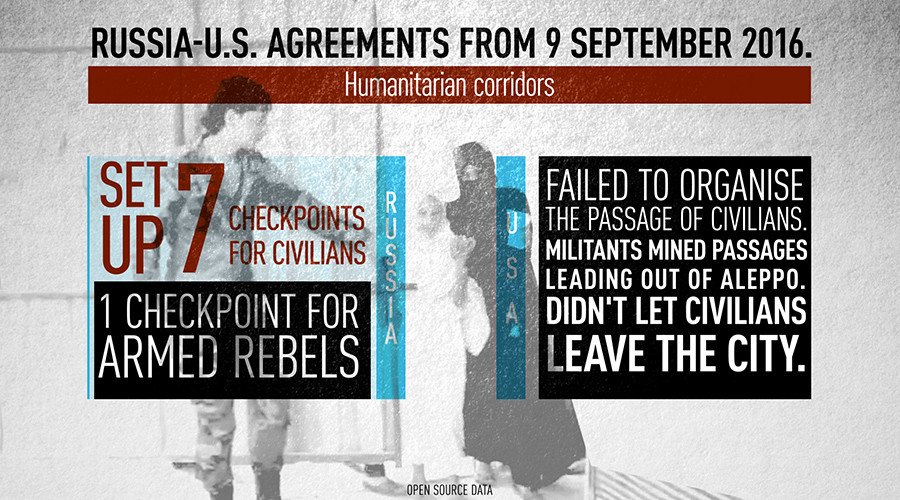
However, Russian Foreign Minister Sergey Lavrov noted in October that Moscow “doesn’t see any facts that the US is seriously battling Al-Nusra.” Earlier, he also voiced suspicions that the US is “not able or not willing to do this and we have more and more reasons to believe that from the very beginning the plan was to spare Al-Nusra and to keep it just in case for ‘Plan B’...when it would be time to change the regime.”
Under the February agreement, it is Moscow and Damascus which played the leading role in introducing the truce. In addition to sticking to the strict deadline to implement the cessation of hostilities, Moscow and Damascus immediately presented their list of groups and territories which would not be targeted – and offered Washington the chance to expand the list with “moderates” it supports.
Moscow has also shared the coordinates of IS and Jabhat al-Nusra positions and continued carrying out up to 150 strikes against terrorist targets on the ground daily. Combined efforts by Russia and Syria also eliminated around 35,000 terrorists, including some 2,700 jihadists who came from Russia or former Soviet states.

As the military operation has continued, Moscow has viciously pursued all diplomatic means to secure political settlement in the war-torn country, working as a member of the International Syria Support Group (ISSG). Russia is also spearheading the drafting of a new Syrian constitution, in hopes to cement a political dialog between fighting factions in Syria.
On the ground, Moscow and Damascus have offered countless humanitarian aid deliveries, while the Russian center for reconciliation of opposing sides in Syria has monitored ceasefire violations. According to the latest numbers, 847 residential areas now respect the truce. Russian and Syrian efforts also convinced some 69 opposition groups to lay down their arms.
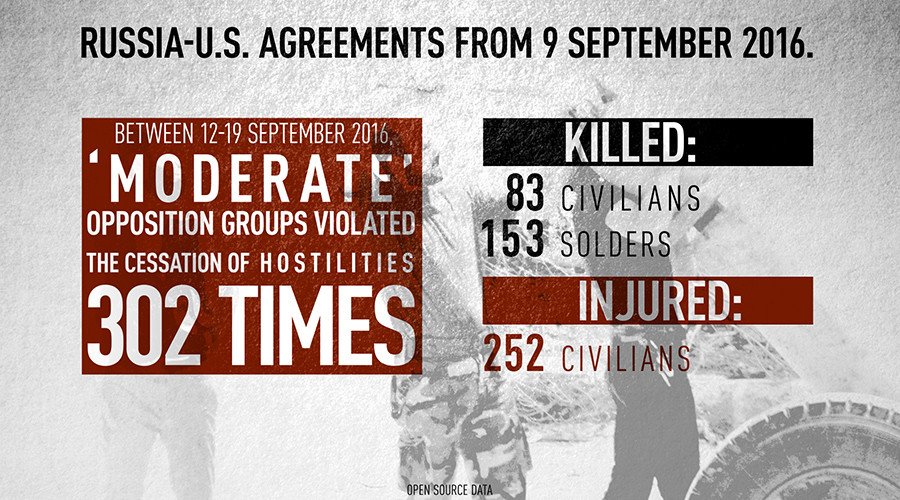
In September, Moscow tried to revive the February deal and signed another agreement with Washington – the preamble of which read that both nations will undertake joint efforts to stabilize the situation in Syria, with special measures for the Aleppo region. Russia even made sure the Syrian armed forces honored the arrangement and introduced live internet feeds from the ground.
Moscow and Damascus were also instrumental in establishing Castello Road as the main artery to deliver aid to eastern Allepo. Under the agreement, both Syrian government troops and opposition units were to pull back simultaneously from Castello Road, creating a “demilitarized zone.” But after jihadists hijacked the vital route, Syrian government troops returned to heavy weapons to secure the passage against a possible takeover by militants.
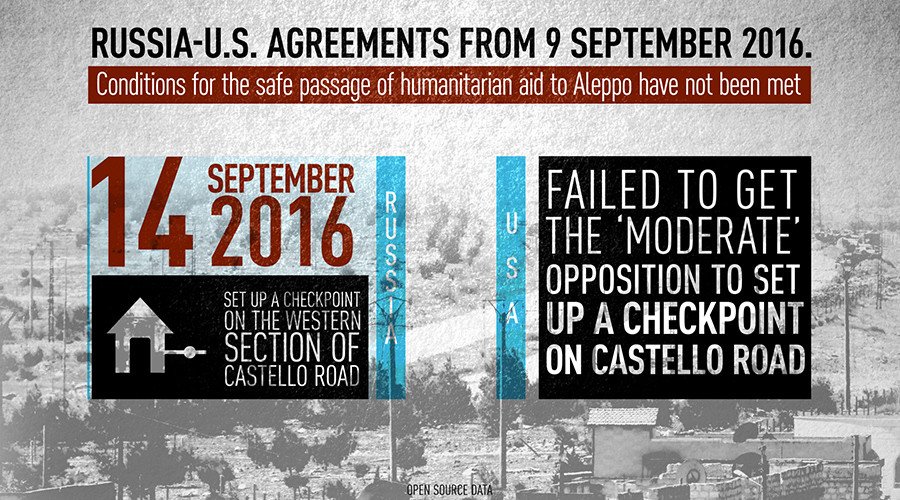
READ MORE: Russian MoD livestreams from Aleppo as civilians leave militant-held areas
Despite the violence, Russia has continued insisting that it is prepared to extend a fragile nationwide ceasefire, while calling on the United States to ensure that the rebel groups it supports do not violate the truce. Even while registering daily violations, Russia and Syria have refused to bomb Aleppo for over a week now, allowing militants in eastern Aleppo to leave the city. Moscow also facilitated the creation of humanitarian corridors for civilians to leave areas inhabited by terrorists.
